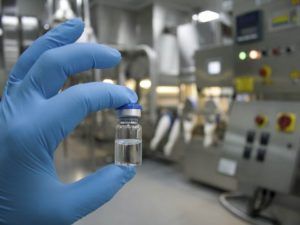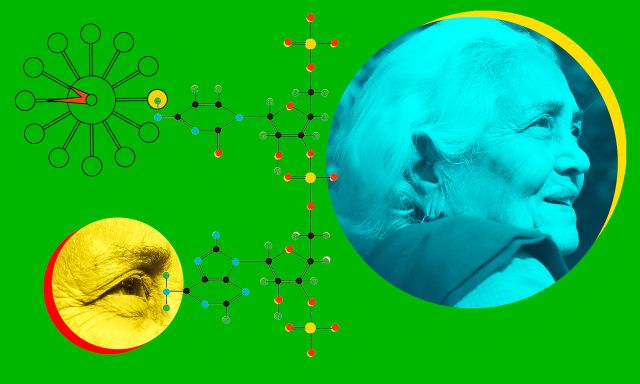https://www.spreaker.com/user/cbanks/special-guest-ira-pastor-ceo-bioquark


Dr. Oliver Medvedik Vice President of LEAF appears in this new TED interview where he talks about aging research and the possibilities of future medicine.
Aging happens to all of us, but scientists still don’t know the mechanism behind it. We need to focus on finding an answer, says molecular biologist Oliver Medvedik.
If given the option, would you choose to live forever? Many of us would say “yes,” but with one major caveat: just as long we don’t age. In scientific terms, aging means “a progressive loss of fitness in an organism over time,” says molecular biologist and TED Fellow Oliver Medvedik. What causes this loss of fitness in humans is multifaceted, although scientists are exploring different theories including — and these are just a few of the many avenues of research — the deterioration of the health of our telomeres (the ends of our chromosomes), changes in cell mitochondria, inefficient clearance of damaged cell proteins, and the senescence of stem cells, leading to chronic inflammation and a depletion of stem cells.
Although it causes a loss of fitness and health, aging is not seen as a disease. “The FDA defines a disease as something that afflicts only a segment of the population. But aging affects everyone,” says Medvedik, the co-founder of Genspace, a citizen science biotech lab, and a professor of bioengineering at the Cooper Union in New York City. And because aging is not considered a disease by the government, it limits the amount of federal funding available in order to study it.

A look back at the most popular health and medical science videos of 2017. Here is the video: “View the Future of Medicine with Nanorobots, Weaponized Killer T-cells, Lab-grown Organs, and Gene Editing”
A glimpse at the future in a new film clip from CATS with medical nanorobots, weaponized killer T-cells, synthetic organs, and gene editing.



Cold plasma looks like the glow from the “Star Wars” blue lightsaber but this beam of energy, made of electrons that change polarity at micro-second or nanosecond speeds, could help bones heal faster, according to a study published August 11th in the Journal of Tissue Engineering and Regenerative Medicine.
Most people interact with plasma every day. It’s in our TVs, fluorescent lights, lightning, the aurora borealis, and the sun. However, these are all examples of hot or “thermal” plasmas. Since the discovery of cold plasma, about 20 years ago, it has been used in agriculture to sterilize the surface of fruit without damaging the delicate edibles. More recently, scientists have been performing experiments treating living animal cells and tissues with cold plasma to learn more about its potential applications in medicine.
“We’ve previously studied how different applications of cold plasma can either directly kill cells, such as in skin cancer, or help them grow, as in developing bones. In this study, we asked how cold plasma would affect the area surrounding cells, known as the extracellular matrix,” says lead author Theresa Freeman, Ph.D., Associate Professor in the Department of Orthopedic Surgery in the Sidney Kimmel Medical College at Thomas Jefferson University. The extracellular matrix around cells is made of collagen and other proteins that interact with the cells and can influence their growth and behavior. For example, the extracellular matrix can either promote or inhibit bone formation or cancer cell growth and metastasis.


Scientists, who had previously cloned polo ponies, have achieved yet another breakthrough in their work that could lead to the creation of genetically engineered “super-horses” that are faster, stronger and better jumpers than regular horses within two years.
Scientists in Argentina reportedly managed to rewrite the genomes of cloned horses by using a powerful DNA editing technique called CRISPR. They also produced healthy embryos that are now expected to be implanted into a surrogate mother by 2019.
CRISPR, an acronym that stands for Clustered, Regularly Interspaced, Short Palindromic Repeats, is basically a technique in a bacteria’s immune system. When a virus invades a bacterial cell, the CRISPR system captures a piece of the virus’s DNA and slides it into a section of the bacteria’s own DNA, allowing it to detect and destroy the virus as well as similar viruses in future attacks.

Usually, when we’ve referred to Crispr, we’ve really meant Crispr/Cas9—a riboprotein complex composed of a short strand of RNA and an efficient DNA-cutting enzyme. It did for biology and medicine what the Model T did for manufacturing and transportation; democratizing access to a revolutionary technology and disrupting the status quo in the process. Crispr has already been used to treat cancer in humans, and it could be in clinical trials to cure genetic diseases like sickle cell anemia and beta thalassemia as soon as next year.
But like the Model T, Crispr Classic is somewhat clunky, unreliable, and a bit dangerous. It can’t bind to just any place in the genome. It sometimes cuts in the wrong places. And it has no off-switch. If the Model T was prone to overheating, Crispr Classic is prone to overeating.
Even with these limitations, Crispr Classic will continue to be a workhorse for science in 2018 and beyond. But this year, newer, flashier gene editing tools began rolling off the production line, promising to outshine their first-generation cousin. So if you were just getting your head around Crispr, buckle up. Because gene-editing 2.0 is here.
